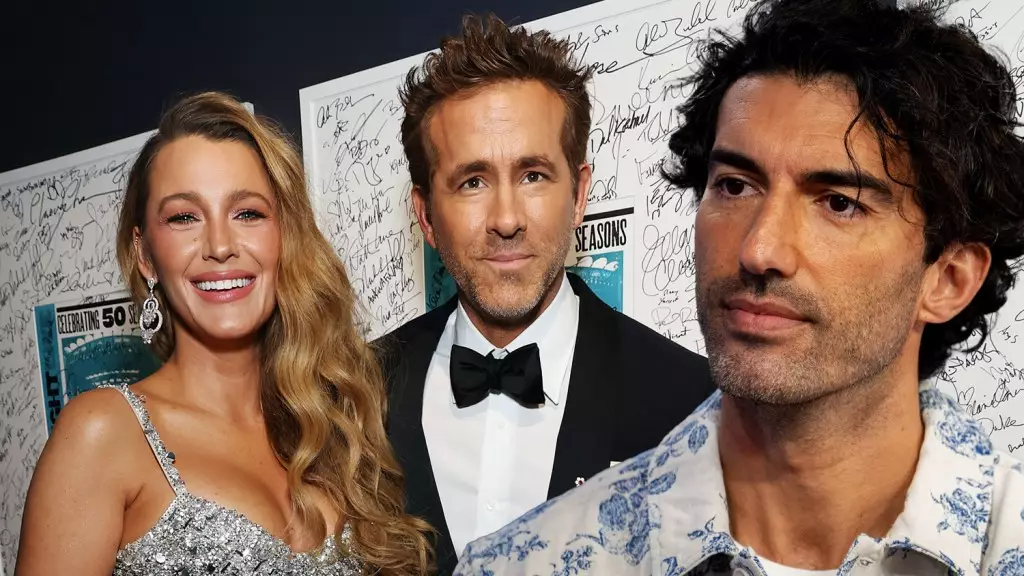The ongoing legal battle between Blake Lively, Ryan Reynolds, and Justin Baldoni has captivated public attention, largely due to the complex themes surrounding defamation, harassment, and the roles of public relations firms in high-profile disputes. As the situation develops, the involvement of publicist Leslie Sloane and her agency, Vision PR, comes under scrutiny. Their bid to extricate themselves from the drama adds a layer of intrigue to an already complicated case.
In the thick of legal discourse, the controversy began when Lively and Reynolds’ publicist positioned herself firmly against Baldoni’s purported “bizarre and abusive practices.” This phrase indicates a deeply troubling context, highlighting the potential seriousness of Baldoni’s alleged behavior toward his female employees. Sloane’s legal team filed a motion to dismiss the claims brought against her and her PR company, arguing that the accusations were merely a tactic employed by Baldoni’s side to deflect attention from their own alleged misconduct.
The legal landscape is littered with accusations and counter-accusations, where Sloane asserts that Baldoni’s team has unjustly implicated her and her company in a smear campaign, effectively using them as scapegoats. This claim suggests that the true eye of the storm lies within the actions and communications of Baldoni and his representatives, rather than the external parties swept into the conflict.
PR firms often find themselves in the crosshairs during celebrity scandals, serving as both protectors and scapegoats for their clients. Sloane’s challenge—seeking to distance Vision PR from this litigation—raises questions about ethical boundaries in public relations. The argument presented by Sloane’s legal team indicates that they have not engaged in any wrongdoing that could equate to extortion or defamation.
Moreover, the filing emphasizes that Baldoni and his affiliated parties failed to substantiate their claims adequately. Legal experts suggest that for accusations of extortion and defamation to hold weight, the claims must detail the specifics of the alleged actions clearly. Without such clarity, the charges risk being seen as unfounded, potentially damaging the credibility of Baldoni’s claims.
As both parties retreat from the possibility of mediating their differences, the prospect of a trial looms large on the horizon. Scheduled for March 29, 2026, the trial will not only examine the facts surrounding Lively’s grievances but also the broader implications of power dynamics within Hollywood. High-profile lawsuits serve as reminders of the precarious balance between celebrity culture and the systems that enable or undermine it.
The refusal to mediate suggests a deepening divide and heightened tensions between the parties involved. With an escalating war of words—where claims of print, digital prisms, and online narratives intertwine—this case not only fuels public interest but also questions the very fabric of how disputes are handled in the age of instant information dissemination.
Both sides of the case have resorted to public narratives to bolster their positions. Allegations surfaced regarding Baldoni’s PR team engaging in a smear campaign against Lively, aimed at discrediting her claims before they materialized in public consciousness. This scenario exemplifies concerns surrounding the use of “dark arts” in public relations—tactics that can distort public perception and manipulate narratives in favor of one party over another.
Yet, the public’s role in these heated exchanges cannot be overlooked. As social media platforms amplify voices, the rising tide of public sentiment often plays an instrumental role in shaping narratives. The statements and actions taken by Lively and Reynolds in their pursuit of justice counteract the potential fallout from aggressive PR tactics, illustrating how celebrities leverage their platforms against adversarial narratives.
The case involving Blake Lively, Ryan Reynolds, and Justin Baldoni is far from resolved, with new developments arising regularly. As Leslie Sloane and Vision PR seek to remove themselves from the fray, the intricate web of allegations continues to catch everyone involved in its grasp.
Ultimately, the trial promises not only to explore the personal grievances of the parties but also to shine a spotlight on the often murky waters of public relations and celebrity culture. As the legal battle unfolds, many will be watching to see how the power dynamics at play will be resolved within this sensational saga.

